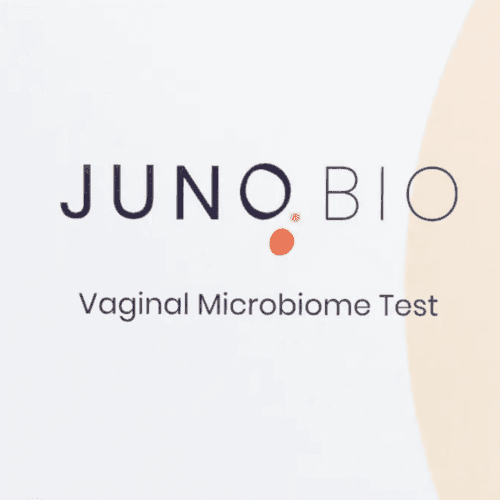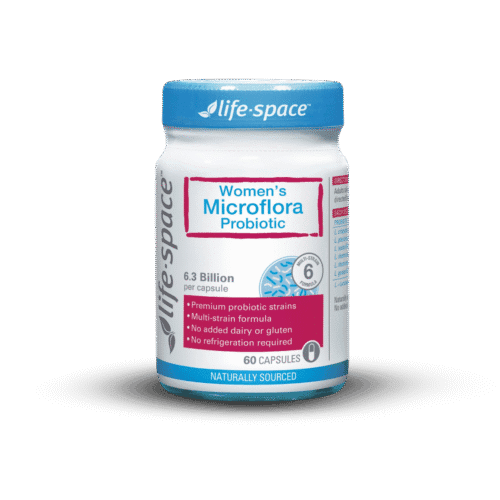Boric acid can be a lifesaver when you’re stuck in a cycle of bacterial vaginosis (BV)1 or yeast infections2. It’s quick, easy to access, and often feels like the only thing that works.
But while it might seem like the perfect solution, long-term or repeated use can quietly deplete the vaginal ecosystem, especially in people with low estrogen or reduced glycogen reserves. This depletion ultimately leaves you less able to fight infections.
Let’s explore why this happens and what to do instead.
How boric acid works
Boric acid works by slightly acidifying the vagina and mildly disrupting microbes. It helps suppress disruptive bacteria and yeasts, as well as break through stubborn overgrowths. That’s why it’s often used as a rescue treatment in BV1 and yeast infections3 — short, sharp, and effective.
However, boric acid doesn’t feed the vaginal microbiome or support epithelial cells. It forces the pH down chemically rather than supporting the body’s own metabolic pathways that maintain acidity through lactobacilli and glycogen metabolism. Additionally, boric acid can’t effectively disrupt biofilms.
The role of oestrogen and glycogen
Oestrogen governs the health of the vaginal epithelium. When oestrogen levels are adequate, the epithelial cells become plump and full of glycogen — a stored form of glucose. As these cells shed, lactobacilli break down the glycogen into lactic acid, maintaining a protective acidic pH and discouraging the growth of harmful microbes.
When oestrogen is low — in the late stages of perimenopause, postmenopause, postpartum, during restrictive dieting, or chronic stress — glycogen stores drop. This means lactobacilli have less energy to produce lactic acid. The vaginal microbiome becomes under-fuelled, and other species start to fill the gap.
How boric acid disrupts an already depleted environment
Using boric acid long-term in a vagina that’s already glycogen-poor can worsen depletion.
Acidity without nourishment
Boric acid chemically lowers pH, but doesn’t supply the carbon sources that beneficial bacteria need, and it can’t effectively disrupt biofilms. The result is a ‘cosmetic’ acidity — the pH looks healthy, but the microbial ecosystem is still starving.
Slows epithelial renewal
Studies show boric acid can mildly suppress epithelial metabolism and keratinocyte activity. Over time, this can blunt glycogen synthesis and slow tissue regeneration.
Discourages lactobacilli dominance
Lactobacilli need glucose polymers from glycogen to thrive. Without replenishment, they lose competitive advantage to species that can survive on proteins, mucins, or host debris — often opportunistic bacteria and yeasts.
Hinders mucosal and lipid barrier recovery
The vaginal barrier depends on healthy epithelial lipids, mucins, and cell turnover. Chronic boric acid use in a low-oestrogen environment can thin this layer and perpetuate irritation or dryness.
The rebound effect
Many women experience ‘bounce-back’ symptoms after stopping boric acid — discharge, odour, and itching. This isn’t a sign that boric acid didn’t work. It’s a sign that the vaginal ecosystem was never metabolically stabilised.
The cycle repeats because boric acid masks imbalance without restoring the conditions required for microbial self-regulation: glycogen availability, epithelial health, and mucosal integrity.
Supporting long-term vaginal health
Instead of depending on boric acid cycles, the goal is to help the vagina regain its own metabolic power.
Focus on:
- Restoring oestrogenic influence – topical or systemic oestrogen (where appropriate), phyto-oestrogenic herbs, and overall hormone support.
- Feeding the vaginal epithelium – using prebiotics such as lactulose, glycogen analogues, or low-molecular carbohydrates that feed lactobacilli.
- Rebuilding the lipid barrier – oils rich in fatty acids and antioxidants, like sea buckthorn, jojoba, or squalane, can help restore epithelial moisture and resilience.
- Short, strategic boric acid use only – limit to defined treatment courses, ideally followed by supportive phases that encourage microbial and mucosal repair.
Practical alternatives to boric acid
Boric acid is an excellent short-term ally but a poor long-term partner. It can make symptoms disappear while quietly depleting the very resources the vagina needs to heal and sustain itself. For anyone with low oestrogen or glycogen-depleted tissue, overuse can perpetuate the cycle of imbalance.
Supporting the epithelial and microbial ecosystem — not just acidifying it — is what leads to lasting vaginal health.
- Fluomizin – effective antimicrobial and biofilm treatment for BV4, removes disruptive bacteria and biofilms so lactobacilli can return (follow up with a vaginal probiotic)
- BV Rescue – actions include antimicrobial, anti-inflammatory, anti-biofilm, and provides a prebiotic food source for healthy lactobacilli (glycogen substitute)
- Lactulose – a substitute for natural glycogen, used with or without a vaginal probiotic
- Fennelope – support epithelial cells, reduce dryness, promote natural glycogen stores
FAQ
Not if you can help it. Regular boric acid use can suppress epithelial metabolism and reduce the glycogen available to feed protective lactobacilli. Use short courses under professional guidance, then focus on rebuilding the vaginal environment.
Options include vaginal prebiotics like lactulose, topical moisturisers rich in fatty acids, and — in low-oestrogen states — local oestrogen or phytoestrogenic support. These approaches feed the system rather than stress it.
Boric acid lowers pH quickly, so symptoms disappear. Once stopped, the microbiome resumes its unbalanced state because the underlying metabolism wasn’t corrected. Rebuilding epithelial glycogen and restoring lactobacilli balance is key.
References
- 1.Abbe C, Mitchell CM. Bacterial vaginosis: a review of approaches to treatment and prevention. Front Reprod Health. Published online May 31, 2023. doi:10.3389/frph.2023.1100029
- 2.De Seta F, Schmidt M, Vu B, Essmann M, Larsen B. Antifungal mechanisms supporting boric acid therapy of Candida vaginitis. Journal of Antimicrobial Chemotherapy. Published online November 19, 2008:325-336. doi:10.1093/jac/dkn486
- 3.Iavazzo C, Gkegkes ID, Zarkada IM, Falagas ME. Boric Acid for Recurrent Vulvovaginal Candidiasis: The Clinical Evidence. Journal of Women’s Health. Published online August 2011:1245-1255. doi:10.1089/jwh.2010.2708
- 4.Gaspar C, Rolo J, Cerca N, Palmeira-de-Oliveira R, Martinez-de-Oliveira J, Palmeira-de-Oliveira A. Dequalinium Chloride Effectively Disrupts Bacterial Vaginosis (BV) Gardnerella spp. Biofilms. Pathogens. Published online February 25, 2021:261. doi:10.3390/pathogens10030261
Get a fresh perspective with a qualified, experienced vulvovaginal specialist naturopath.
This product has multiple variants. The options may be chosen on the product pageThe most comprehensive vaginal microbiome test you can take at home, brought to you by world-leading vaginal microbiome scientists at Juno Bio.
Easy-to-use BV and AV treatment program.
Promote and support a protective vaginal microbiome with tailored probiotic species.






